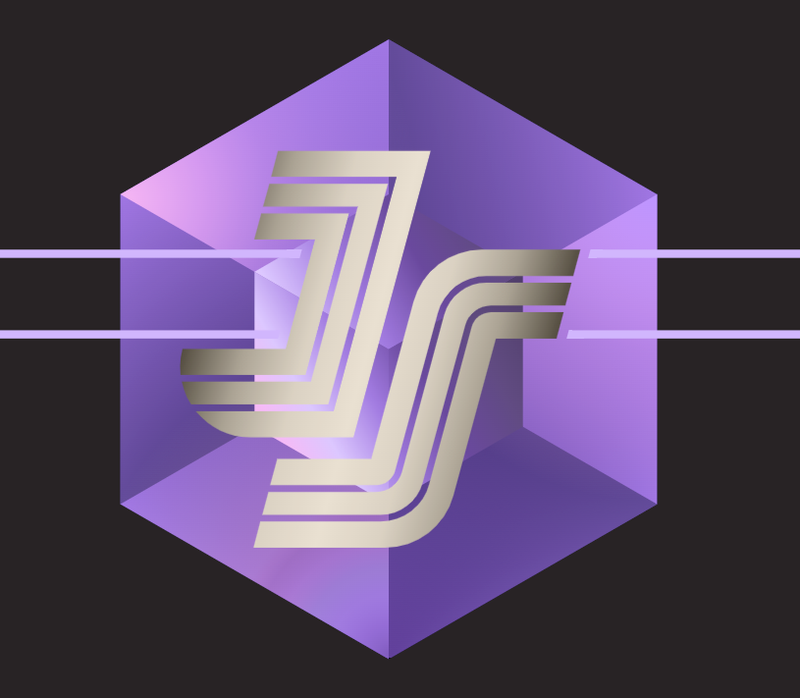A-Frame Core
A DOM-based Entity-Component System to declaratively create 3D and VR worlds in the browser.
This library is specific to the core A-Frame library. For more information about the A-Frame project as a whole, head over to the A-Frame site or the aframe repo.
Entity-Component System
Entity-Component System is an architectural pattern commonly used in game engines such as Unity, PlayCanvas, an Unreal Engine 4+.
There's only one basic element called an entity that defines a scale, a position, and a rotation in the scene. Components encapsulate logic and data that can be attached to entities to extend their functionality, appearance, and behavior. In A-Frame, entities are represented by <a-entity> DOM elements and components as their attributes. This is what a simple scene with a cube and a camera looks like:
<a-scene>
<a-entity camera="fov: 45"></a-entity>
<a-entity position="0 0 -10" rotation="45 30 0"
geometry="primitive: box; height: 4; width: 4; depth: 4"
material="color: green"></a-entity>
</a-scene>
Usage
NOTE: For folks creating scenes and third-party components and elements, we recommend getting started by instead using the aframe library, a set of core resuable elements.
Proceed below if you would like to use the minimal set of primitive components and elements available here in aframe-core.
CodePen
If you want to get started immediately, just fire up this CodePen example scene!
Downloads
To get started, simply include these files in your project:
Or if you'd prefer the unminified version for local development (with source maps):
Also, be sure to check out these awesome examples:
npm
First install from npm:
npm install aframe-core
And in your Browserify/Webpack modules, simply require the module:
require('aframe-core')
Local installation and development
Alternatively, you can clone this repository to work locally on this project.
git clone https://github.com/aframevr/aframe-core.git
cd aframe-core
npm install
To start the local development server:
npm start
And fire up http://localhost:9001!
Running tests
After you have cloned the repo and installed the dependencies, simply run the tests like so:
npm test
Browser console logging
If you'd like to see helpful logs, warnings, and errors, you can enable logging from the console of your favourite developer tools:
localStorage.logs = 1
And to disable:
localStorage.logs = 0
Maintainers
Ensure you have cloned the repo and installed the dependencies.
Developing alongside the other aframe packages (e.g., aframe)
If you want to make changes to the aframe library and test with aframe-core, you'll need to run these commands to link things up correctly.
Linking
When you are in the directory of your aframe-core repo checkout:
npm link
When you are in the directory of your aframe repo checkout:
npm link aframe-core
Now when you make changes to aframe-core, those changes will get reflected when a bundle gets built (the page is refreshed or a aframe file is changed), so you can test the aframe-core dependency against aframe without having to manually push things to npm for testing (which is a big no no!).
Unlinking
You'll need to npm unlink when you are done testing things and want to actually use the npm-published versions, not your versions that are locally linked.
From your aframe-core directory:
npm unlink
From your aframe directory:
npm unlink aframe-core
Releasing and publishing a new version to npm
To increment the preminor version of the package (e.g., 0.1.19 to 0.1.20) and create a git tag (e.g., v0.1.20):
npm run release:bump
NOTE: npm versions cannot be unpublished.
Once the package is 100% ready to go, to push the new version to npm (e.g., 0.1.20) and to the new tag to GitHub (e.g., v0.1.20):
npm run release:push
Updating dist files
npm run dist
git commit -am 'Bump dist'
Publishing to GitHub Pages
To publish to https://aframevr.github.io/aframe-core/:
npm run ghpages
To publish to https://your_username.github.io/aframe-core/:
npm run ghpages your_username
License
This program is free software and is distributed under an MIT License.




